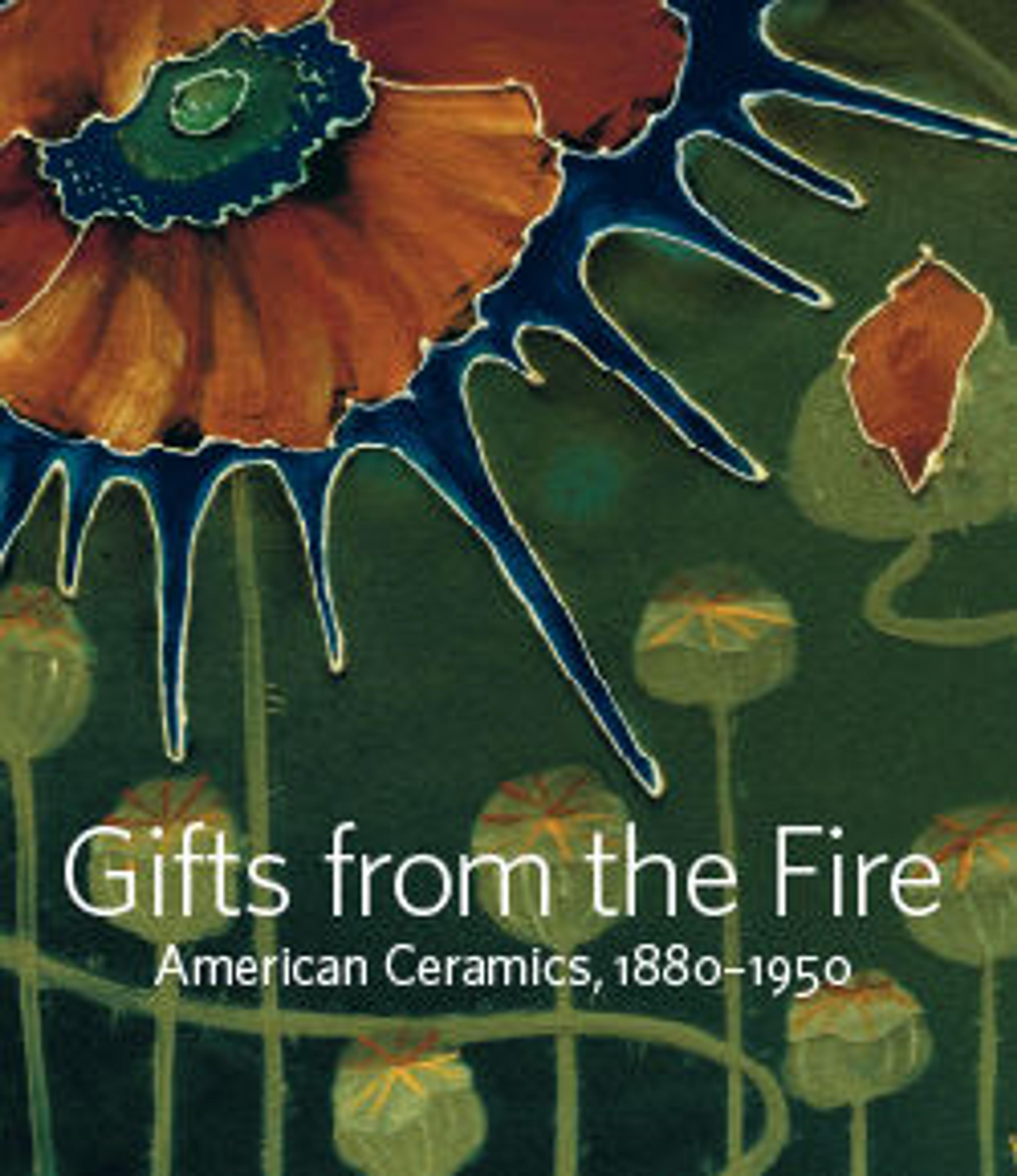Vase
Maria Longworth Nichols was an important figure in the world of American art pottery. She began her career, like many women, as a china painter. Like her rival in Cincinnati, Louise McLaughlin, Storer embraced the French technique of barbotine. She is best known for founding the Rookwood Pottery in 1880, which soon became the largest and longest-lasting art pottery in the United States. Nichols was also an ardent admirer of Asian art. Her father had an extensive collection, and she also collected. Her eyes were open to Japanese motifs and design early on when she was given a copy of the highly influential Manga by Katsushika Hokusai. The prints contained within the albums became critical source material for much of the pottery she decorated in the early 1880s. By the mid 1880s, however, Nichols had ceased her direct involvement with the Rookwood Pottery, perhaps due to the stress of her husband George Ward Nichols’s illness and death. By the late 1890s, as demonstrated by this work, she had begun experimentation in a different direction. Rooted in china painting—the vase is essentially a commercially produced porcelain beaker—she tried to replicate the elusive Chinese sang de boeuf, oxblood red glaze that interested many potters both here and abroad. It is further subtly decorated with the head of a walrus, drawing yet again upon Japanese motifs, this time painted in gold luster.
Artwork Details
- Title:Vase
- Maker:Maria Longworth Nichols (American, 1849–1932)
- Date:1897
- Culture:American
- Medium:Stoneware
- Dimensions:H. 5 7/8 in.
- Credit Line:Gift of Martin Eidelberg, 2020
- Object Number:2020.64.101
- Curatorial Department: The American Wing
More Artwork
Research Resources
The Met provides unparalleled resources for research and welcomes an international community of students and scholars. The Met's Open Access API is where creators and researchers can connect to the The Met collection. Open Access data and public domain images are available for unrestricted commercial and noncommercial use without permission or fee.
To request images under copyright and other restrictions, please use this Image Request form.
Feedback
We continue to research and examine historical and cultural context for objects in The Met collection. If you have comments or questions about this object record, please contact us using the form below. The Museum looks forward to receiving your comments.
